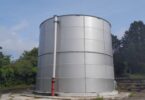Maryland Board of Public Works has approved more than $400,000 in grants to improve water quality and increase climate resiliency. The Board is composed of Governor Larry Hogan, Treasurer Nancy K. Kopp and Comptroller Peter Franchot.
Maryland Environment Secretary, Ben Grumbles said: “These are smart investments to increase climate resiliency and protect public health and prevent water pollution in Maryland communities and the Chesapeake Bay. With climate change bringing wilder and wetter weather, it is more important than ever to support improvements to protect our critical infrastructure and make Maryland communities safer and more resilient.”
The following projects were approved:
Elk Neck State Park Wastewater Treatment Plant Enhanced Nutrient Removal Upgrade project – Cecil County
A $319,960 Bay Restoration Fund grant to Maryland Environmental Service will fund the design of an Enhanced Nutrient Removal upgrade of the Elk Neck State Park Wastewater Treatment Plant to reduce nutrients discharged to the Elk River and ultimately the Chesapeake Bay. Excessive amounts of nutrients such as nitrogen and phosphorus lead to lowered levels of oxygen needed to support aquatic life in waterways, including the Chesapeake Bay. Enhanced Nutrient Removal upgrades of wastewater treatment plants are a critical component of Maryland’s Chesapeake Bay restoration plan. This project will be constructed in accordance with coastal and non-coastal resiliency guidelines developed as part of the Coast Smart Program to reduce climate change risks to such projects.
North Fork Tanyard Branch Stream Bank Restoration and Stabilization project – Talbot County
A $104,066 Comprehensive Flood Management grant to the Easton Utilities Commission will help fund a project to restore and stabilize the North Fork Tanyard Branch, which is adjacent to and under the Easton Utilities Power Plant 1 building. This work will protect critical infrastructure from structural failure due to flooding, bank erosion, and stream incision. This project is consistent with Maryland’s climate change adaptation and resiliency objectives by reducing vulnerability to flood hazards that are exacerbated by increased precipitation intensity.
Do you have an article to share? Click here to submit or if you’d like to subscribe to our weekly newsletter, click here.







